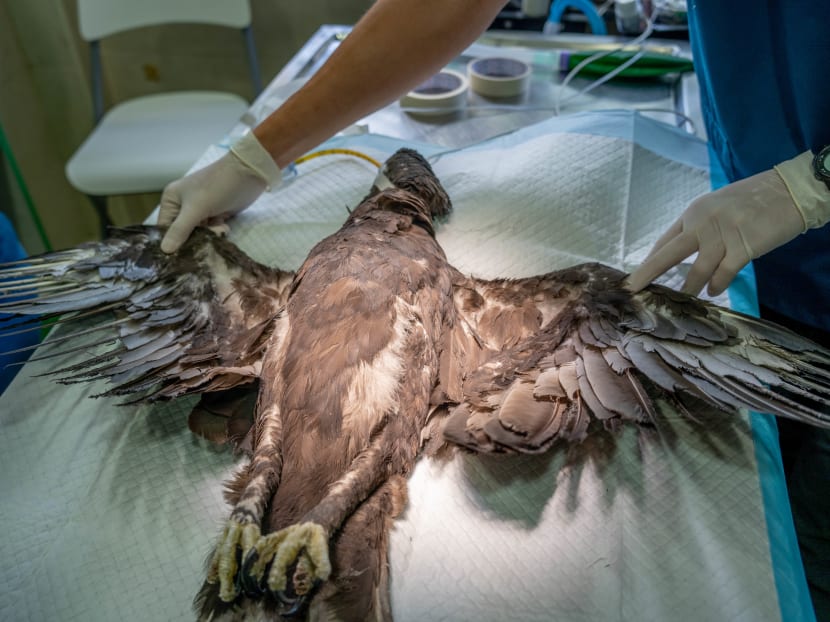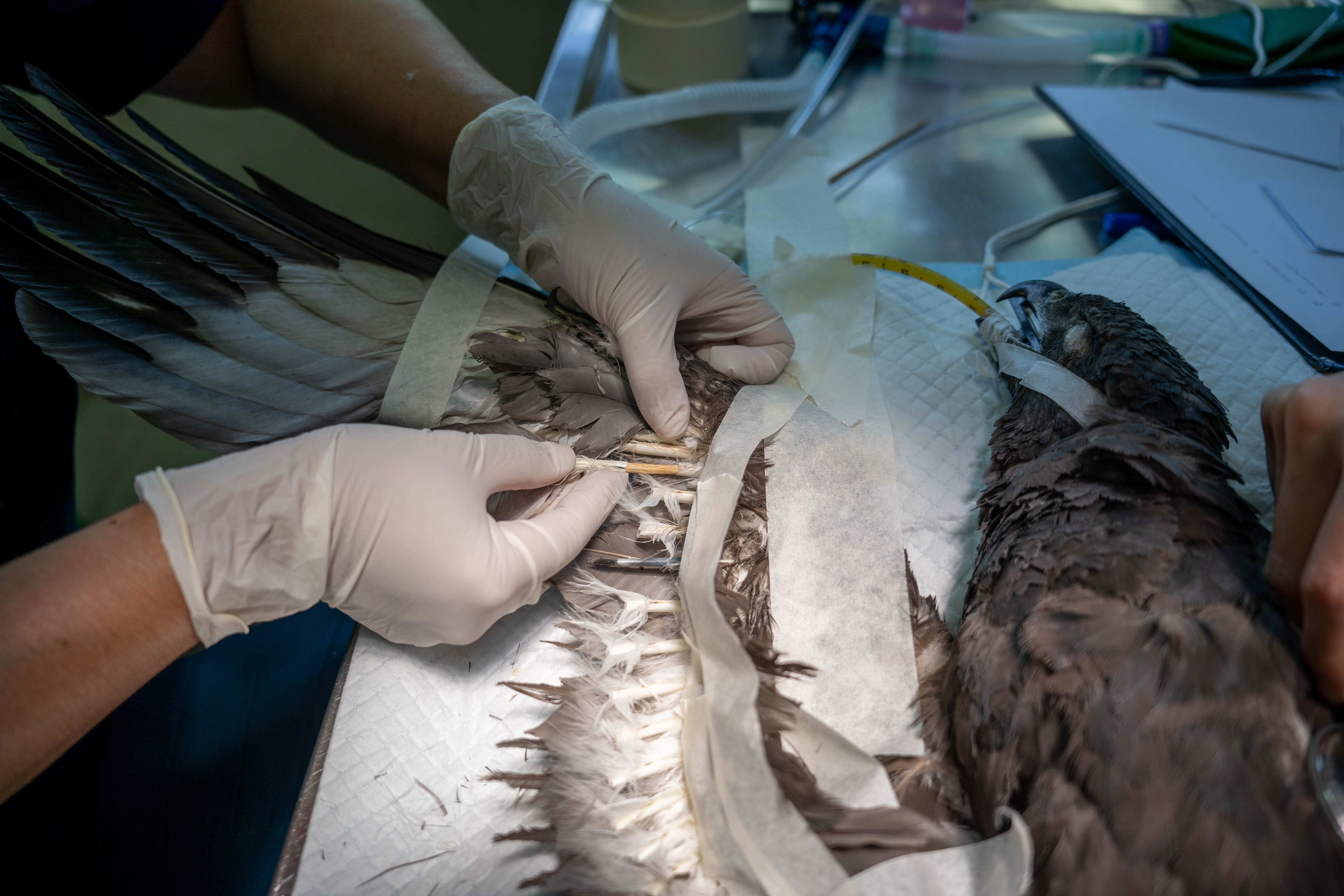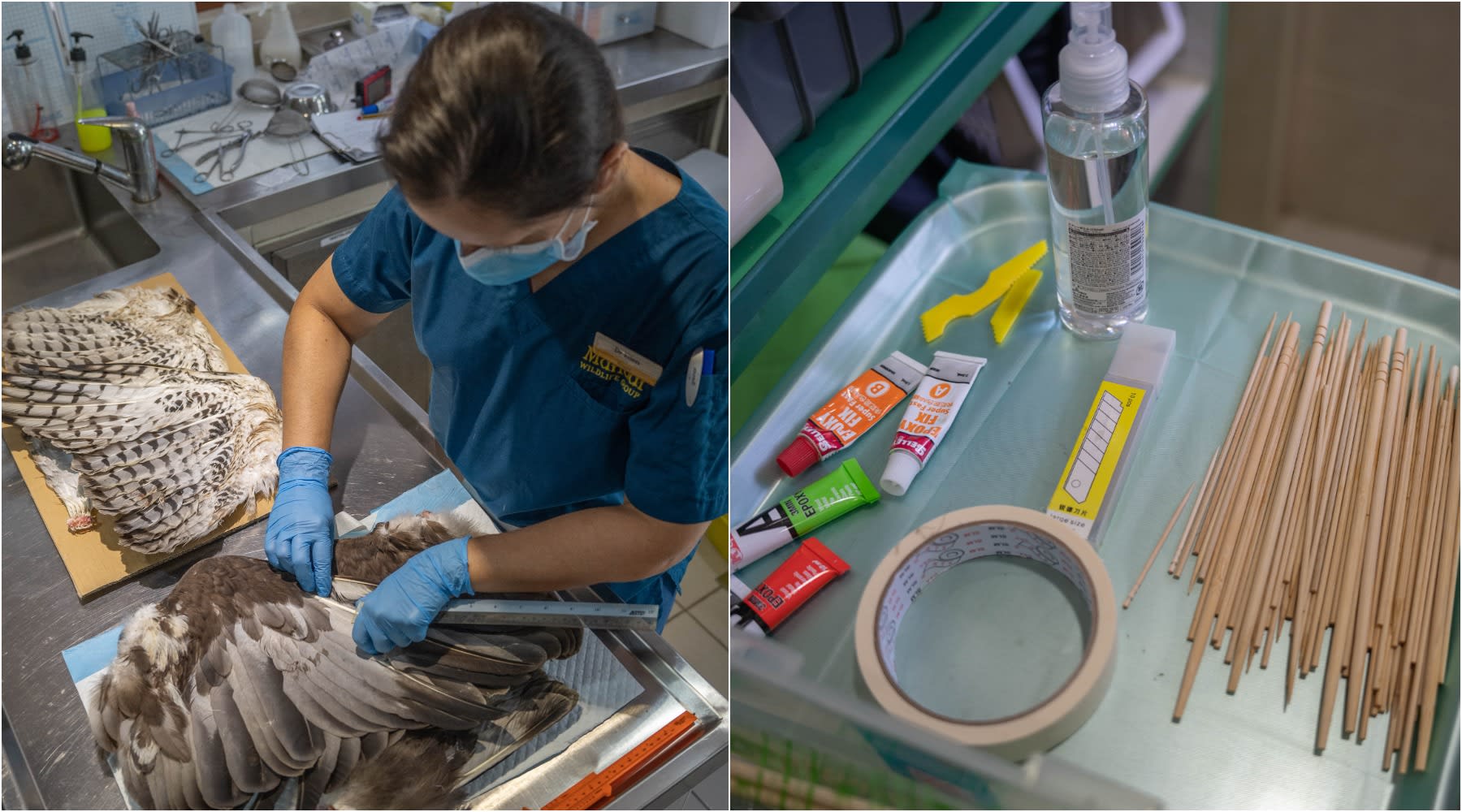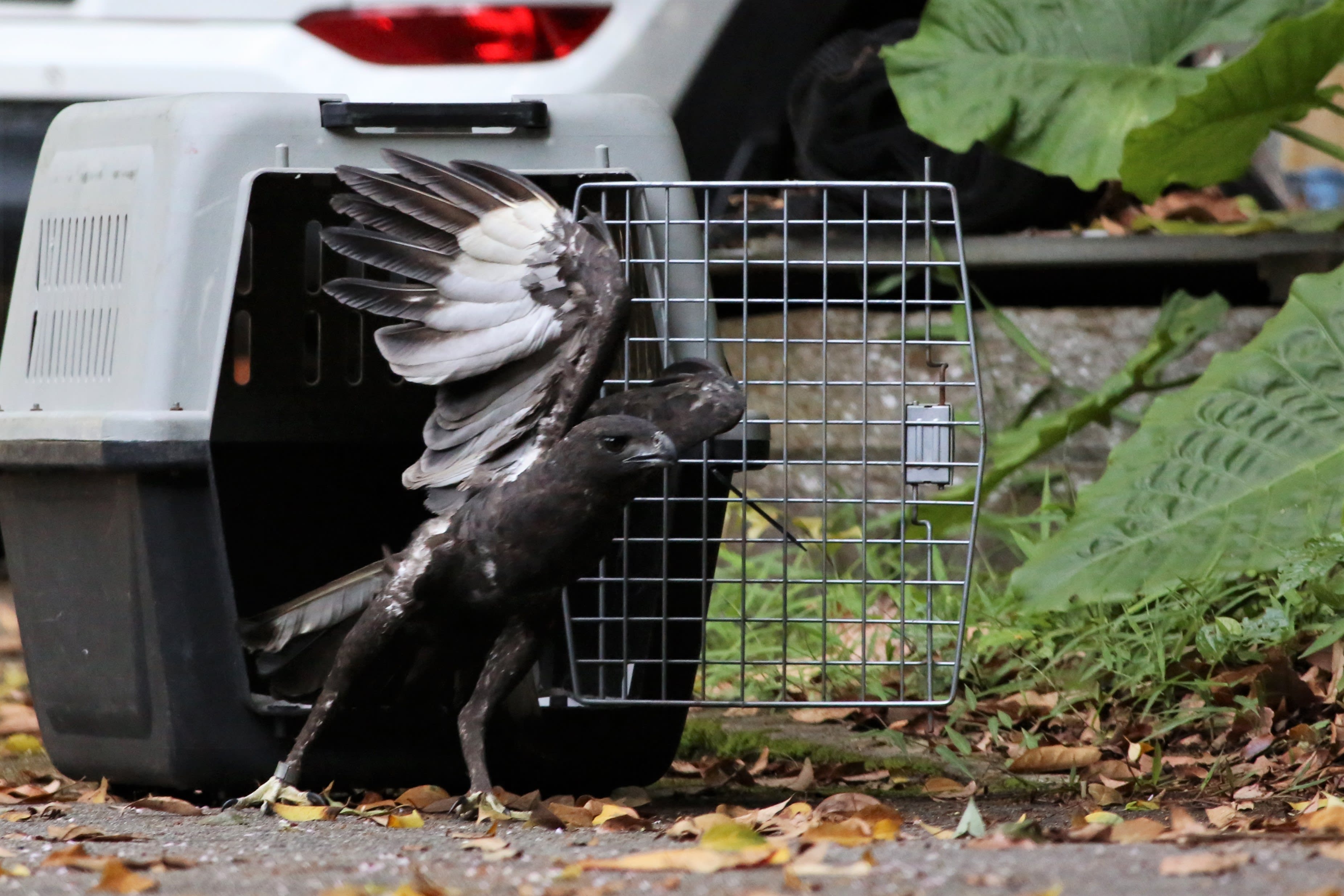Injured eagle released into the wild after vets use bamboo chopsticks to mend feathers
SINGAPORE — An injured changeable hawk-eagle that had burnt feathers on its wings and tail was able to fly unhindered again with help from an unlikely everyday item: Bamboo chopsticks.

Veterinarians preparing for an operation on a changeable hawk-eagle.
- An injured eagle was successfully released into the wild after treatment at the Jurong Bird Park’s avian hospital
- Veterinarians used a process called "imping" to treat the bird’s burnt feathers
- Each burnt feather was joined to a new one by inserting bamboo chopsticks into the shaft of both feathers
- The bird has flown 10km since its release on Jan 21
SINGAPORE — An injured changeable hawk-eagle that had burnt feathers on its wings and tail was able to fly unhindered again with help from an unlikely everyday item: Bamboo chopsticks.
In a process called “imping”, veterinarians at the Jurong Bird Park avian hospital joined each of the bird’s burnt feathers to a new one by inserting bamboo chopsticks into the shaft of both feathers.
The new feathers were taken from other birds of the same species that had lost their lives to illnesses or injuries, and there was a 12-day or so wait for the donated feathers to be available.
Each set of old and new feathers was then secured with epoxy, an adhesive that is safe for birds.
When the bird moults, which can take up to a year, the new feathers it grows would push the mended feathers out and they will drop naturally.
Moulting is the natural process by which birds lose feathers at a particular time of year so that new feathers can grow.
It is painless for the bird because feathers are made of keratin — the same material as human hair and nails.

The changeable hawk-eagle gets its name “changeable” because the species is known to come in two colour forms.
This particular one was spotted at Jurong Island on Jan 7 by a member of the public. It could not fly because the feathers on its wings and tail were burnt.
Though the cause of injury cannot be confirmed, Jurong Bird Park surmised that it could have had its feathers singed by hot gas or flares, based on the damages observed on its feathers.
It was later rescued by the National Parks Board (NParks) and taken the next day to Jurong Bird Park’s avian hospital.
Aside from its burnt feathers, it was assessed to be in good health.
However, because it would take around a year for the eagle to grow new feathers and fly again, the vets decided to imp its wings and tail feathers to speed up its release to the wild.

The team, consisting of two vets and two vet nurses, spent a few hours last Thursday (Jan 20) replacing more than 50 feathers on the bird's wings and tails.
Dr Ellen Rasidi, one of the vets, said: “The method for imping is similar to humans getting hair extensions. However, unlike hair extensions, we have to be extra meticulous in ensuring that each individual replacement feather is carefully trimmed, measured and arranged in the right position to match the patient’s original feather length and orientation as much as possible.”
This is because each feather is shaped differently and fixing them in incorrect angles may affect the aerodynamics of the bird’s flight.
Imping is an ancient procedure that can be traced back centuries, the vet said. Falconers in the 1200s would use this technique to fix the feathers on their birds-of-prey, as it was important that they could hunt well.

The operation on the changeable hawk-eagle was a success and it was released by NParks last Friday.
It has flown about 10km since its release, based on data from a solar-powered tracking device that NParks had attached to its tail.
The solar-powered satellite tracker will continue to provide information on its location for as long as the tail feathers remain on the bird.
Once the old tail feathers are moulted to accommodate new feathers, the tracker will also drop off, which could happen anytime between six and 18 months, according to Dr Adrian Loo, the group director of wildlife management at NParks.
This is not the first winged creature to benefit from healthcare technology.
In November last year, two ageing birds-of-prey afflicted with a foot disease known as “bumblefoot” successfully recovered from their condition with the help of 3D-printed shoes.
They are among the 200 bird “patients” that Jurong Bird Park’s avian hospital receives every year. Most of these birds would be successfully treated and be released into the wild, Jurong Bird Park said. For the rest, they do not survive or may be kept at the bird park as a last resort.








